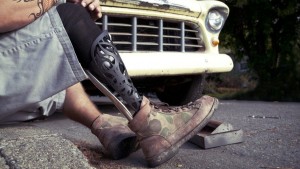On its most basic level, 3D printing uses a digital 3-dimensional model of an object, and “prints” it by applying hundreds or thousands of incredibly thin layers of material (often some kind of quick-drying liquid plastic or metal) on top of each other until the object is complete. The applications are endless–3D printers can now print almost anything you can imagine (including personalized bobbleheads based on pictures you take) using gold, silver, chocolate, wax, ceramics, and even animal- and human cells. These last bits–the cells–have the potential to quite literally change the world we live in.
 Let me give you some examples of the absolutely amazing ways doctors and scientists are using 3D printing to improve–and save–lives. We’ll start with “that’s cool,” move on to “wow!” continue through “awesoooooome,” touch on slack-jawed, stunned silence, and finish up with a look into what’s in the pipeline.
Let me give you some examples of the absolutely amazing ways doctors and scientists are using 3D printing to improve–and save–lives. We’ll start with “that’s cool,” move on to “wow!” continue through “awesoooooome,” touch on slack-jawed, stunned silence, and finish up with a look into what’s in the pipeline.
Click here to read the rest of this story.



